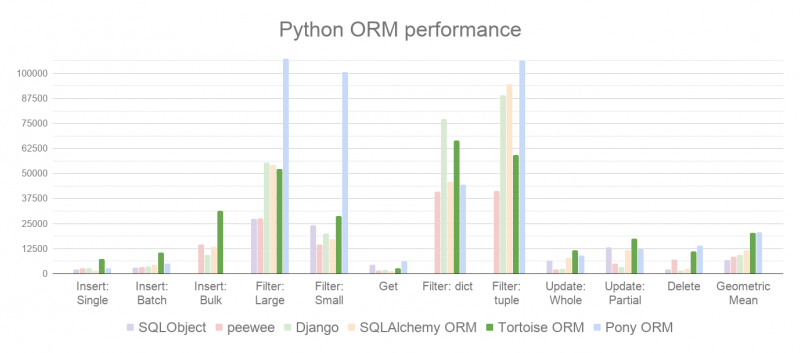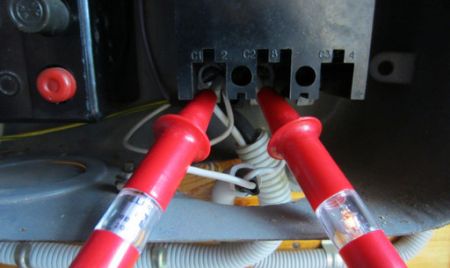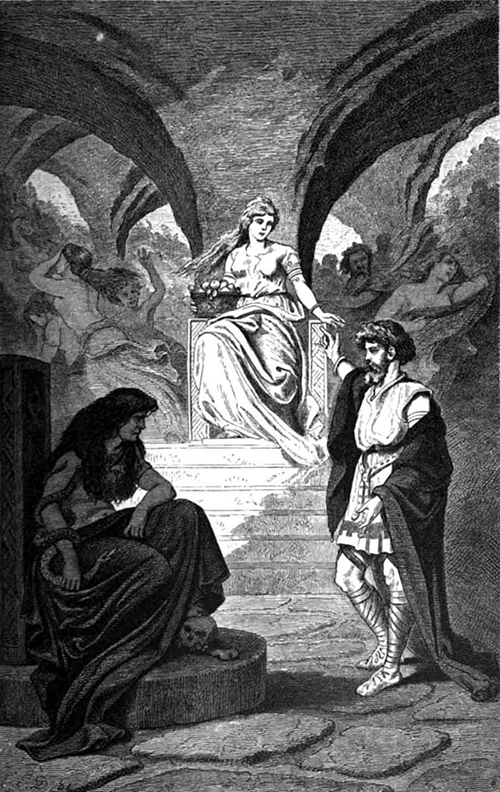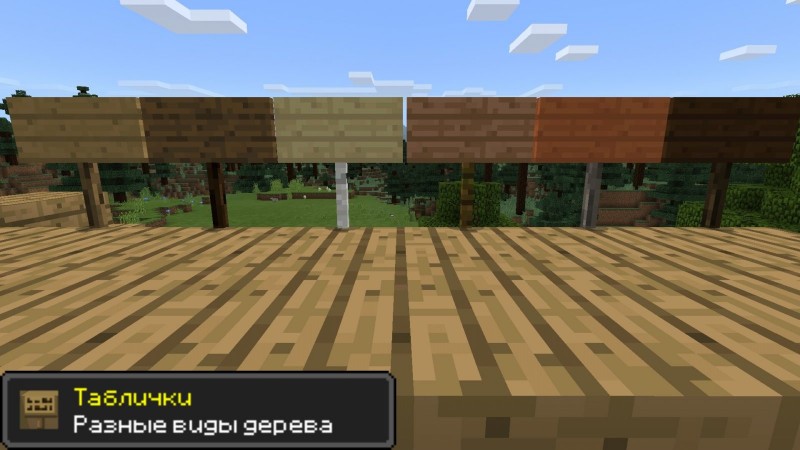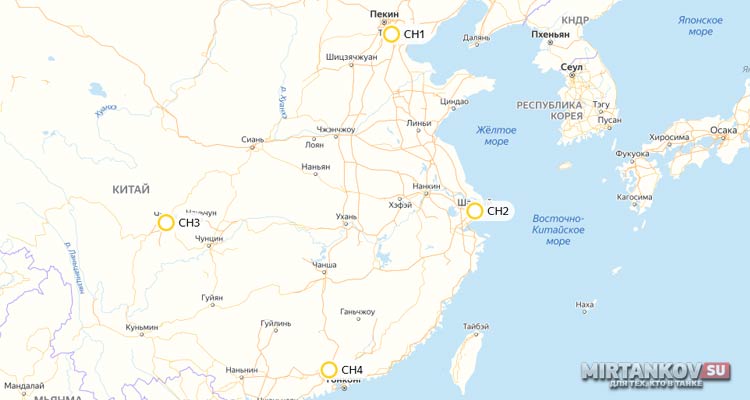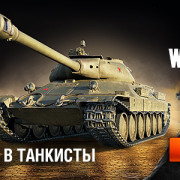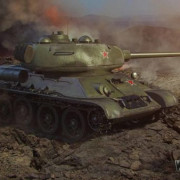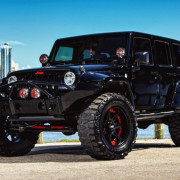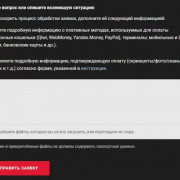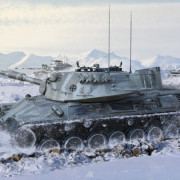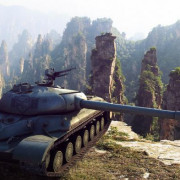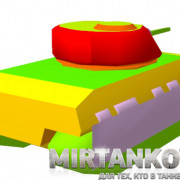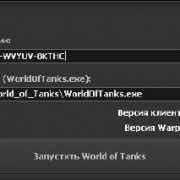Турецко-русский онлайн-переводчик и словарь
Содержание:
- The wartime evolution: Chi-Ha Shinhoto
- Историческая справка
- Links
- Chi-Ha production and evolution
- Active service
- Историческая справка
- References
- Design of the Type 97 TK
- Design of the Chi-Ha
- Operational history
- Weapon Background[edit]
- The last Japanese tankette
- Ссылки
- Variants
- History and development
- Variants and succession of the Chi-Ha
- Operational history
- Modules
The wartime evolution: Chi-Ha Shinhoto
The Type 97 Kai Shinhoto Chi-Ha was simply a rearmed model, using the new Type 1 47 mm (1.85 in) army gun. This long-barrel (2.5 m), high muzzle velocity (730 m/s) gun was developed when the Type 94 model proved insufficient to defeat the armor of most Russian tanks of the 1939-40 generation. The gun itself had been tested since 1938, and was at first rejected because of poor performance. But, after some improvements, it was quickly adopted by the IJA general staff as the new main antitank gun. A tank variant was developed by Osaka Arsenal, most being given to the new Shinhoto Chi-Ha. It had better performance, a muzzle velocity of 830 m/s (2,723 ft/s) and a maximum range of 6,900 m (7,546 yd). A total of 2300 of these guns were produced until 1945. The first Shinhoto prototype was ready only at the end of 1941, and production began early in 1942. This new model completely replaced the Chi-Ha on the factory line. When production finally stopped in 1943, 930 had been delivered, despite an army request for more than 2500. This was mostly due to the lack of raw materials the Japanese industry suffered daily. However, the Chi-Ha design was largely incorporated into the new Type 1 Chi-He and derivatives.
Историческая справка
-
Основная статья: История Type 98 Ke-Ni
«Ке-Ни», «2598», Тип 98 (яп. 九八式軽戦車ケニ кю: хати сики кэй сэнся кэ ни) — японский лёгкий танк времён Второй мировой войны. Несмотря на значительное превосходство над более ранним танком «Ха-Го», так и не сумел заменить его в производстве, и выпуск «Ке-Ни» ограничился незначительным количеством.
Конструкция легкого танка 2598 отличалась ходовой частью, состоящей из шести опорных катков по каждому борту сблокированных попарно в тележки со стандартной подвеской типа Хара, трех поддерживающих роликов, заднего направляющего и переднего ведущего колес.
Корпус имел узнаваемые контуры танка Type 95 Ha-Go, хотя был существенно доработан. Лобовые листы получили толщину до 16 мм и увеличенный угол их наклона. Также изменилась и компоновка легкого танка 2598 / Type 98 KE-NI. Теперь место механика-водителя находилось по оси корпуса машины, что улучшало обзор. Также вместо стандартных рычагов управления танком был установлен штурвал.
Легкий танк 2598 / Type 98 KE-NI был вооружен новой 37-мм пушкой Type 100, установленной в новой конической башне, и 7,7-мм спаренным с пушкой пулеметом. Курсовой пулемет был демонтирован.
Легкий танк Type 98А Ke-Ni был разработан в 1938 году для того, чтобы заменить устаревающий Type 95 Ha-Go, эксплуатация которого в войне с Китаем выявила многочисленные недостатки машины. Однако, несмотря на успешные испытания машина в 1938 году в серию не пошла, против китайцев и старого танка было более чем достаточно.
К танку вернулись только после начала Второй Мировой на Тихом Океане, когда в 1942 году было принято, наконец, решение о его серийном производстве (правда, всего за два года построили только 103 машины). Вооружение его было достаточно типичным для японской бронетехники — 37-мм пушка Type 100 и пулемет калибра 7.7-мм.
Позже, на базе этого танка была разработана модификация — модель Type 98B Ke-Ni Otsu, на котором японские конструкторы опробовали новые технические идеи. С этой целью новая машина получила подвеску типа Кристи, с пружинными свечками и нетрадиционные для японской бронетехники четыре больших опорных катка на борт (без подерживающих катков вообще). Дизель воздушного охлаждения Mitsubishi Type 100 мощностью в 130 л.с. разгонял эту машину массой в 7.4 т с 16-мм бронёй до 55 км/ч, сделав ее, таким образом, самым быстрым японским танком Второй Мировой.
Однако, с точки зрения японцев, оказалось, что «овчинка выделки не стоит», сложность подвески Кристи по сравнению с другими типами оказалась избыточной, а выигрыш — неочевидным. Поэтому данный танк вообще не пошел в производство.
Links
The TK on WikipediaThe Type 97 TK On Armytankmuseum.auA 3-view drawing
| Dimensions (L-w-h) | 3.70 x 1.80 x 1.77 m (12 x 5.10 x 5.9 ft) |
| Total weight, battle ready | 4.7 tons (10,360 lbs) |
| Crew | 2 (driver, gunner/commander) |
| Propulsion | Hino Motors diesel air-cooled 4-cyl engine, 48 hp (36 kW) |
| Top speed | 42 km/h (26 mph) |
| Armor | 4 to 16 mm (0.16-0.63 in) |
| Armament | 37 mm (1.46 in) Type 94 gun or 7.7 mm (0.3 in) Type 97 machine-gun |
| Range (at cruise speed) | 250 km (155 miles) |
| Total production | 596 (557 ?) |
Type 97 Te-Ke, the machine-gun version, unknown infantry unit, Burma, 1942. Due to the shortage of 37 mm (1.46 in) guns, many were delivered in this undergunned configuration.
Type 97 Te-Ke gun version, Malaya, January 1942. This gun was also mounted on the Type 95 Ha-Go light tank.
Chi-Ha production and evolution
By September 1939, around 300 units had been produced, and quickly tried in China. A more violent baptism of fire was received against Russian armor at Nomonhan Plateau (Battle of Khalkin Gol). Despite having good performances, these tanks proved themselves ill-matched against most Russian tanks, including lightly protected models like the BT-5/7. The Soviet models possessed high velocity 45 and 37 mm (1.77-1.46 in) main guns, which outranged the Japanese tanks. The Type 97 infantry gun proved useless during these engagements. The reports made after these events prompted an upgunning and upgrade effort inside the army. A new 47 mm (1.85 in) high velocity gun was developed and tried at the beginning of 1941. This new Type 1 gun required turret modifications, which resulted in the main variant of the type, the Type 97 kai. The Chi-Ha production ended early in 1942, with a total of 1162 being delivered. The production line was adapted for the new improved model.
Active service
The Chi-Ha was, along with the Ha-Go, the bulk of IJA and Navy armored forces in eastern Asia. They were the most often encountered Japanese tanks by the Allies during the entire conflict. It was largely deployed in China after the second invasion of 1937, easily outmatching the ill-equipped tank battalions of the National Revolutionary Army of China. Things began the become serious with the first deployment on the Russian border, during the incidents which led to the large scale battle of Nomonhan plateau, in September 1939. Here, only four Type 97s were incorporated into the 3rd Tank Regiment of the 1st Tank Corp under Lt. General Yasuoka Masaomi’s command. One of these, serving as the command tank, was stuck in a tank trap and burst into flames after being shot by several BT-5s, BT-7s and AT guns. Others were disabled, proving their main gun was no match for the Russian long range, high muzzle velocity weapons. Manchurian Type 97s that remained, once again fought against Soviet forces, in August 1945. By then, most Russian tanks were one generation ahead.
During the battle of Malaya and of Singapore, Yamashita’s 3rd Tank Group comprised dozens of Type 97. The 3rd Tank Company under First Lieutenant Yamane (Saeki Detachment) distinguished itself, spearheading the attack on the British defenses. The Chi-Ha proved capable of fending off thick jungle and seemingly impassable terrain, as did Guderian’s Panzers in the Ardennes, and were key to Yamashita’s victory. The 2nd and 14th Tank Regiments, also largely composed of Chi-Has, participated in the Burma campaign. In the Philippines, in May 1942, the first Shinhoto Chi-Ha entered in action against Wainwright’s armored forces, comprising mainly light M3 tanks. Their improved gun proved lethal, enabling the engaged Japanese units to conclude the battle of Corregidor with a crushing victory.
The next step was in the Eastern Indies (Indonesia), against the combined ABDA ground forces. Despite the muddy, hilly terrain, thick, soaky jungle, and scorching heath, some Type 97s participated in the operations, although in limited numbers. They were to be used in Papua/New Guinea, and some fought at Guadalcanal during the offensive of the Solomon islands.
Later, during the Pacific campaign, many Type 97s of the IJ Marines were posted in strategic islands, and found themselves engaged in desperate defensive actions. Their most notable intervention occurred during the combined offensive of Colonel Takashi Goto’s 9th Tank Regiment and Colonel Yukimatsu Ogawa’s 136rd Infantry Regiment, combining nearly sixty Chi-Ha and Ha-Go tanks, along with many tankettes, at Saipan, against the US 6th Marine Regiment. They were broken by a hellish fire from land (tanks and field artillery), sea (naval guns) and air. This was the last and largest Japanese offensive involving such armor during the conflict. On many other islands, Chi-Ha tanks were simply half buried in the ground, as defensive positions, since their armor proved largely inferior to the M4 Sherman and most Allied tanks sent in this sector. Numerical inferiority proved to be an issue too often. At Peleliu, Iwo Jima, and Okinawa, the few Type 97s left were outnumbered six up to ten to one, and a single infantry battalion counted several bazooka operators, all deadly against the Chi-Ha.
Историческая справка
Тип 97, «2597», «Те-Ке» — японский малый танк времён Второй мировой войны. По западной классификации относился к танкеткам. Был разработан для замены устаревшего малого танка Тип 94 и находился в производстве с 1937 по 1942 год. Конструкция танка оказалась довольно удачной и он активно использовался в Китае, Бирме, Малайе и на островах Тихого океана до самого конца войны.В войсках «Те-Ке» применялся обычно для разведки, связи и задач охранения, но высокие для своего класса характеристики позволяли порой использовать его и для поддержки пехоты. Помимо этого, как и большинство танкеток, он использовался в роли бронированного тягача.Очевидная слабость вооружения малого танка Тип 94 заставила японцев искать возможности его усиления уже вскоре после начала серийного выпуска. В 1935 году был построен прототип с 37-мм пушкой, но рассчитанная на пулемёт башня оказалась слишком тесной, а орудие — слишком мощным для столь лёгкой машины.В сентябре 1937 года фирмой «Мицубиси» был построен первый прототип нового танка, сохранявший компоновку танка Тип 94 с передним расположением двигателя. Несмотря на то, что испытания показали значительное его превосходство над предшественниками, было решено отказаться от переднемоторной компоновки из-за того, что размещение командира и механика-водителя в разных отсеках мешало координации действий экипажа. К ноябрю того же года был готов второй прототип танка, с размещением двигателя в кормовой части танка, а механика-водителя и командира — в объединённом переднем отделении. Также, перемещение моторного отделения позволило изменить конструкцию двигателя, повысив его мощность с 60 до 65 л. с. По результатам испытаний обоих прототипов, лучшим был признан вариант классической компоновки, который и был принят на вооружение под обозначением Тип 97.Серийно «Те-Ке» выпускался с 1937 по 1942 год; общий выпуск, по разным данным, составил от 593 до 616 машин, не считая конструкций на его базе, подавляющее большинство из которых было произведено в 1939—1940 годах.
References
- Coox, Alvin D. (1985). Nomonhan: Japan Against Russia, 1939 (Two volumes). Stanford University Press. ISBN 0-8047-1160-7.
- Foss, Christopher (2003a). Great Book of Tanks: The World’s Most Important Tanks from World War I to the Present Day. Zenith Press. ISBN 0-7603-1475-6.
- Foss, Christopher (2003b). . Crestline. ISBN 0-7603-1500-0.
- Gander, Terry J (1995). Jane’s Tanks of World War II. Harper Collins. ISBN 0-00-470847-4
- Tomczyk, Andrzej (2002). Japanese Armor Vol. 1. AJ Press. ISBN 83-7237-097-4.
- Tomczyk, Andrzej (2003). Japanese Armor Vol. 3. AJ Press. ISBN 978-8372371287.
- Zaloga, Steven J. (2007). Japanese Tanks 1939–45. Osprey. ISBN 978-1-8460-3091-8.
- Zaloga, Steven J. (2008). Armored Thunderbolt: The US Army Sherman in World War II. Stackpole Books. ISBN 978-0-8117-0424-3.
Design of the Type 97 TK
The 1937 prototype was still largely based on the previous Type 94, and bore many similarities, starting with the drivetrain, although the engine was now located at the rear. Because of this, the fighting compartment was pushed forward, and the turret was now roughly in the middle. This put the driver and commander in close proximity, easing communication. The hull was still riveted, and the interior covered by heat absorbing asbestos sheets. The 37 mm (1.46 in) Type 94 main gun (L/36.7) was supplied with 94 rounds, had an elevation of -15/+20°, a 600 m/s (660 yd/s) muzzle velocity and could penetrate 45 mm (1.77 in) of armor at 300 meters (330 yd).
This gun model, also shared with the Type 95 Ha-Go, was always in short supply, and many TKs ended with a Type 97 machine gun instead. Protection was limited to 16 mm of armor (0.63 in) on the front and turret, and was found inadequate against the HE rounds of the mainstream US M2 0.50 cal (12.7 mm) machine guns. The only known variant was the Type 98 So-Da, an ammo supply vehicle and APC.
Design of the Chi-Ha
The Mitsubishi design heavily relied on previous features present on the Ha-Go, as well as some innovations. These included a set of 12 buttons situated in the turret, linked to a corresponding set of buzzers which acted as instructions for the driver, as there was no intercom. The driver sat on the right and hull gunner to the left. The tank commander was also the gunner, sited inside the turret, and assisted by a loader/radioman/rear machine-gunner. Like previous models, the turret had no coaxial machine-gun, but a rear turret ballmount, housing a Type 97 machine-gun. The turret was equipped with a relatively large commander cupola. Later, a horse-shoe radio was mounted. This feature is unique among Japanese tanks, being very useful in identifying Chi-Ha vehicles in pictures. No machine-gun turret mount was provided for AA defense.
The suspension was a virtual repeat of the bell-crank system, but with an extra bogie. This gave a total of six road wheels on each side, two paired and two independent. This crude system was meant for easy maintenance, not comfort. The long, bolted hull, was still relatively low and narrow, making this model less maneuverable, but faster, more stable and more difficult to hit. The main gun, the Type 97 57 mm (2.24 in), was an infantry support piece of artillery, with low velocity and poor antitank capabilities. However, these were sufficient against most Chinese tanks of the time. It had no elevation gear. An interesting feature is that the gun had a limited traverse (10 degrees) inside the turret. Armor was slightly thicker than on the Ha-Go, ranging from 8 mm on the bottom (0.31 in), to 26 mm (1.02 in) for the turret sides, and up to 33 mm (1.3 in) on the gun mantlet. This was sufficient against 20 mm (0.79 in) and most 37 mm (1.46 in) weapons. However, the propulsion system was quite revolutionary, with a brand new V12, 21.7 liter diesel, air-cooled engine, developing 170 bhp at 2000 rpm (factory designation SA12200VD). This proved sturdy enough to be produced until 1943. and the Chi-Ha chassis-propulsion was successfully reused for other derivatives.
Operational history
Type 97 Te-Ke tankette in China
A camouflaged Type 97 Te-Ke in the Battle of Muar, 17 January 1942
Typically, Type 97s were distributed to support infantry divisions, where they were very often used as armored tractors, supply vehicles, and for recon/scouting.
The Type 97 was successfully fielded in China during the Second Sino-Japanese War of 1938–1945, as the Chinese National Revolutionary Army had only three tank battalions, which themselves consisted of some Italian CV33 tankettes. Their light weight enabled them to be transported easily across the sea or rivers. The Type 97 tankettes first real test of combat came during the Battle of Nomonhan during the months of May through August in 1939 against the Red Army of the Soviet Union. There, although not designed for such combat, the 97 tankette went up against Russian anti-tank guns and 45mm high velocity guns of the Soviet BT-5 and BT-7 light tanks.
With the start of World War II, the Type 97 contributed significantly to the Japanese victories at the Battle of Malaya and the Battle of the Philippines, as its light weight enabled the tank to traverse unsupported bridges and ferry crossing that would be unable to take heavier tanks, and its small size allowed it to travel along the long winding and narrow roads in the area.
Type 97 Te-Ke at the National Military Museum, near Soest/ Utrecht province, The Netherlands
Weapon Background[edit]
The current main service rifle of the Chinese People’s Liberation Army/Law enforcement units the QBZ-95 had many derived products and variants, one of which is the QBZ-97, a model developed for export. The two rifles are commonly refer to as Type 95 and Type 97 to indicate their year of development completion/service entered.
Type 97 is a selective fire, bullpup configured assault rifle that operates on the same principle as Type 95, gas operated, short-stroke piston, rotating bolt operation. Brass ejects from the right, charge handle is located on top of the receiver below the carrying handle, the gun frame itself is made from Industrial grade polymers.
Type 95 is chambered for the Chinese servicing 5.8x42mm calibre, Type 97 however was developed for export into nations that prefer using the 5.56x45mm calibre, it had several distinctive adjustments made to cope with the firing of 5.56x45mm NATO. 5.56 NATO have a higher average chamber pressure than the 5.8, to ensure stable performance, adjustment was made to the gas cylinder diameter, volume and position. Empty brass ejection force of the 5.56 is also significantly larger, the brass ejection mechanism has also been reworked to compensate for this.
Other minor feature change includes a differently designed muzzle and adjusted magazine well to accept STANAG magazines. Later production variants of Type 97 would feature a three round burst fire mode that can be found on Type 95, on top of semi and fully automatic firing. Additional Picatinny rail placements can be found on the weapon to fit combat accessories and further improve the weapon’s commercial appeal to the buyer country.
The last Japanese tankette
Just like so many other countries, the Japanese military officials were ensnared by the tankette fad, during the thirties. The first model developed was the Jyu-Sokosha (1931), then came the mass-produced Type 94 TK (1933). The last evolution of the Japanese tankette was developed by the Hino Motors Company around a 4-cylinder diesel engine, and carried a 37 mm (1.46 in) gun, which was far more potent than the usual machine-gun.
Hello, dear reader! This article is in need of some care and attention and may contain errors or inaccuracies. If you spot anything out of place, please let us know!
This prototype, built in 1936, was the very basis for the new Type 97, or 1938 according to the imperial calendar, after many tests and changes demanded by the Army. The final prototype, delivered in November, and finally accepted, entered full-scale production in 1938. They were designed to give additional fire support to infantry divisions, as well as many other tasks.
Ссылки
- Ресурсы World of Tanks
- Танковедение
- Тема на официальном форуме
- Записи боев на Type 5 Ke-Ho
- В сети Интернет
Type-5 Ke-Ho // Википедия
Техника Японии
| Лёгкие танки | I Renault Otsu • II Type 95 Ha-Go • II Type 97 Te-Ke • III Type 97 Chi-Ha • III Type 98 Ke-Ni • IV Type 5 Ke-Ho |
| Средние танки | II Chi-Ni • II Type 89 I-Go/Chi-Ro • IV Type 1 Chi-He • V Type 3 Chi-Nu • V Type 3 Chi-Nu Kai • VI Type 4 Chi-To • VII Type 5 Chi-Ri • VIII STA-1 • VIII STA-2 • IX Type 61 • X STB-1 |
| Тяжёлые танки | III Type 91 Heavy • IV Type 95 Heavy • V O-I Experimental • VI Heavy Tank No. VI • VI O-I • VII O-Ni • VIII O-Ho • IX Type 4 Heavy • X Type 5 Heavy |
Лёгкие танки
| Техника СССР | I МС-1 • II БТ-2 • II Т-45 • II Т-26 • II Т-60 • II Тетрарх • III БТ-СВ • III ЛТП • III М3 лёгкий • III БТ-7 артиллерийский • III Т-116 • III БТ-5 • III Т-127 • III Т-46 • III Т-70 • IV БТ-7 • IV Т-80 • IV Валентайн II • V А-20 • V Т-50 • VI МТ-25 • VI Т-50-2 • VII ЛТГ • VIII ЛТТБ • VIII ЛТ-432 • IX Т-54 облегчённый • X Т-100 ЛТ |
| Техника Германии | I Leichttraktor • II Pz.Kpfw. II Ausf. D • II MKA • II Pz.Kpfw. 38H 735 (f) • II Pz.Kpfw. 35 (t) • II Pz.Kpfw. I • II Pz.Kpfw. II • III 43 M. Toldi III • III Pz.Kpfw. 38 (t) • III Pz.Kpfw. III Ausf. E • III Pz.Kpfw. II Ausf. J • III Pz.Kpfw. I Ausf. C • III Pz.Kpfw. II Ausf. G • III Pz.Kpfw. T 15 • IV Pz.Kpfw. 38 (t) n.A. • IV Pz.Kpfw. II Luchs • V VK 16.02 Leopard • VI VK 28.01 • VII Aufklärungspanzer Panther • VII Spähpanzer SP I C • VIII leKpz M 41 90 mm • VIII leKpz M 41 90 mm GF • VIII HWK 12 • VIII HWK 30 • IX Spähpanzer Ru 251 • X Rheinmetall Panzerwagen |
| Техника США | I T1 Cunningham • II M2 Light Tank • II T1E6 • II T2 Light Tank • II T7 Combat Car • III M22 Locust • III M3 Stuart • III MTLS-1G14 • IV M5 Stuart • V M24 Chaffee • V M7 • VI T21 • VI T37 • VII T71 CMCD • VII T71 DA • VIII T92 • VIII M41 Walker Bulldog • IX T49 • X XM551 Sheridan |
| Техника Франции | I Renault FT • II D1 • II AM 39 Gendron-Somua • II AMR 35 • II FCM 36 • II Renault R35 • II Hotchkiss H35 • III AMX 38 • IV AMX 40 • V AMX ELC bis • VI AMX 12 t • VI Panhard AMD 178B • VII AMX 13 75 • VII Hotchkiss EBR • VII AMX 13 57 • VII AMX 13 57 GF • VIII Panhard EBR 75 (FL 10) • VIII Panhard AML Lynx 6×6 • VIII Bat.-Châtillon 12 t • VIII ELC EVEN 90 • IX AMX 13 90 • IX Panhard EBR 90 • X Panhard EBR 105 • X AMX 13 105 |
| Техника Великобритании | I Cruiser Mk. I • II M2 • II Cruiser Mk. II • II Light Mk. VIC • III Valentine • III Stuart I-IV • III Cruiser Mk. III • IV Cruiser Mk. IV • V Covenanter • VI Crusader • VII GSR 3301 Setter • VIII FV1066 Senlac • VIII LHMTV • IX GSOR3301 AVR FS • X Manticore |
| Техника Китая | I Renault NC-31 • II Vickers Mk. E Type B • III Type 2597 Chi-Ha • IV M5A1 Stuart • VI 59-16 • VI Type 64 • VII Type 62 • VII WZ-131 • VIII WZ-132 • VIII M41D • IX WZ-132A • X WZ-132-1 |
| Техника Японии | I Renault Otsu • II Type 95 Ha-Go • II Type 97 Te-Ke • III Type 97 Chi-Ha • III Type 98 Ke-Ni • IV Type 5 Ke-Ho |
| Техника Чехословакии | I Kolohousenka • II LT vz. 35 • III LT vz. 38 |
| Техника Польши | I 4TP • II TKS z n.k.m. 20 mm • II 7TP • III 10TP • IV 14TP |
| Техника Швеции | I Strv fm/21 • II Strv m/38 • II L-60 • III Strv m/40L |
| Техника Италии | I Fiat 3000 • II L6/40 |
Variants
Several variants of the Type 97 were produced. The Type 98 So-Da APC was designed for use as an armored personnel and ammunition carrier. Production of the vehicle began in 1941. Another produced was the Type 100 Te-Re, which was designed for use as an artillery observation vehicle. It went into production in 1940.
In addition, a Type 97 Disinfecting Vehicle and Type 97 Gas Scattering Vehicle were produced. They were based on the Type 97 Te-Ke chassis, but had a Type 94 tankette turret. The Type 97 Te-Ke was modified and used as a «tractor»; closed for protection against the chemical agents. It would pull either a configured independent tracked mobile liquid dissemination chemical vehicle or a respective tracked mobile disinfecting anti-chemical agents vehicle. It operated in the same way as its predecessor, the Type 94 Disinfecting Vehicle and Type 94 Gas Scattering Vehicle.
History and development
The origins of the Type 97 lay in a prototype diesel-engine version of the Type 94 Te-Ke developed by Hino Motors in 1936. Although the prototype had a more powerful engine and larger gun, initial trials were not successful and the Japanese Army demanded changes before acceptance. Hino responded with a modified prototype in November 1937, in which the engine was moved towards the rear of the chassis. This design was accepted and full production began in 1938. A total of 616 units were produced from 1938 to 1944 (1 unit in 1937, 56 units in 1938, 217 units in 1939, 284 units in 1940, 58 units between 1941 and 1944).
Variants and succession of the Chi-Ha
As the most largely produced and tested medium tank, the chassis was found suitable to create countless specialized variants during the war.
– The amphibious Ka-Chi (19 built) and Ka-Tsu (6?), as well as the experimental To-Ku and Ka-Sha.
– Many SPGs, starting with the turretless Type 1 Ho-Ni I and Ho-Ni II, and the Ho-Ni III tank destroyer (around 250 built).
– The Type 2 Ho-I infantry support tank (30 converted by 1945), propelled by a new Type 100 diesel engine, and armed with a 75 mm (2.95 in) howitzer.
– Heavy naval infantry support variant equipped with a 120 mm (4.72 in) short barreled gun for close support. An experimental long barrel was also tested with the naval Type 10 120 mm (4.72 in) AA Gun.
– The Type 4 Ho-Ro howitzer carrier (about 25 produced), with a 150 mm (5.9 in) short-barrel Type 38 howitzer.
– The Type 4 Na-To tank destroyer (2 built), used a chassis derived from the the Type 4 Chi-So tracked transport vehicle, itself derived from the Chi-Ha.
– At least a dozen prototype SPGs and medium tanks until 1945.
The Chi-Ha Shinhoto was also noted as the blueprint for the next generation of IJA tanks, notably the improved Type 1 Chi-He (around 170 produced) and Type 3 Chi-Nu (166).
Operational history
Tactically, 6 tankettes were given to each IJN infantry division. They were primarily intended as scout vehicles, spearheading assaults. They also provided additional firepower where it was needed, and also supplied and/or towed light guns. Each was equipped with a reinforced towing hook. When production ended in 1941-42, a total of 596 or 557, depending on the source, had been produced, without any notable change. Most saw action in China, in various areas, until 1945. They were opposed by the Chinese National Revolutionary Army’s few Italian CV-33 tankettes and French FT tanks, which did not seriously threaten the Type 97.
However, on the Russo-Mongolian border they suffered heavy casualties, succumbing to the Russian high velocity 45 mm (1.77 in) gun, shared by the BT-5 and BT-7. During first months of the war in the Pacific, their lightweight characteristics were taken full advantage of when crossing small bridges or using wooden ferries. Their small dimensions allowed them to closely follow the infantry on narrow roads and tracks. They soldiered in Malaya, taking part in the fall of Singapore. Many were shipped to the Philippines, rarely opposed to American armor. But, when it was the case the M3 light tanks proved deadly.
Modules
Guns
| Gun | Penetration(mm) | Damage(HP) | Rate of fire(rounds/minute) | Dispersion(m/100m) | Aiming time(s) | Weight(kg) |
Price( ) |
||
|---|---|---|---|---|---|---|---|---|---|
| II | 5.7 cm Gun Type 97 | 30/55/28 | 75/75/95 | 20 | 0.46 | 2.3 | 150 | 2800 | |
| IV | 47 mm Gun Type 1 | 81/122/25 | 70/70/90 | 20 | 0.44 | 2.3 | 411 | 21000 | |
| III | 37 mm Gun Type 100 | 49/69/18 | 45/45/60 | 26.09 | 0.41 | 1.5 | 206 | 4400 | |
| III | 37 mm Gun Type 1 | 58/73/19 | 50/50/65 | 26.09 | 0.37 | 1.5 | 223 | 8400 |
Turrets
| Turret | Turret Armor (front/sides/rear)(mm) | Turret Traverse Speed(deg/s) | View Range(m) | Weight(kg) |
Price( ) |
||
|---|---|---|---|---|---|---|---|
| II | Type 97 Chi-Ha | 35/25/25 | 33 | 310 | 1300 | 1000 | |
| III | Type 97 Chi-Ha Shinhoto | 35/25/25 | 36 | 330 | 1839 | 2100 |
Engines
| Engine | Engine Power(hp) | Chance of Fire on Impact(%) | Weight(kg) |
Price( ) |
||
|---|---|---|---|---|---|---|
| III | Mitsubishi SA12200VD | 200 | 15 | 650 | 5000 | |
| IV | Type 100 Suirei V-12 | 220 | 15 | 630 | 8600 | |
| IV | Type 100 Kuurei V-12 | 270 | 15 | 630 | 10500 |
Suspensions
| Suspension | Load Limit(т) | Traverse Speed(gr/sec) | min | Weight(kg) |
Price( ) |
||
|---|---|---|---|---|---|---|---|
| II | Type 97 Chi-Ha | 15.9 | 40 | B/2 | 5000 | 900 | |
| III | Type 97 Chi-Ha Kai | 18 | 45 | B/2 | 5000 | 1750 |
Radios
| Radio | Signal Range(m) | Weight(kg) |
Price( ) |
||
|---|---|---|---|---|---|
| IV | Type 94 Mk. 4 Hei | 350 | 90 | 2350 | |
| VI | Type 96 Mk. 4 Bo | 425 | 50 | 14000 | |
| VIII | Type 3 Otsu | 550 | 240 | 22000 |
